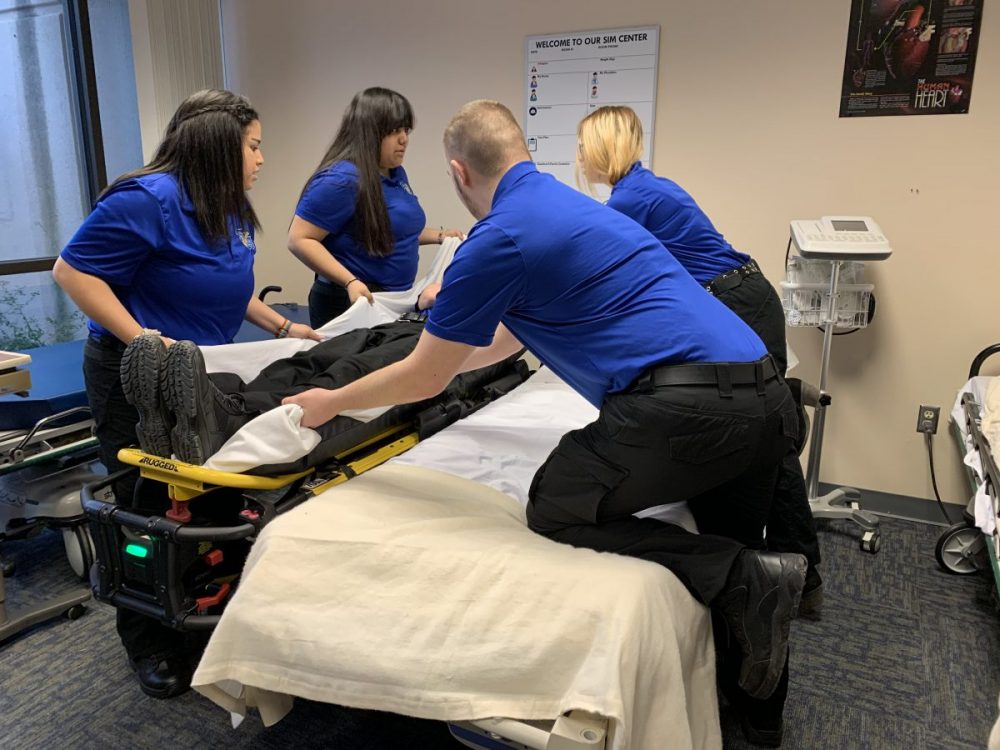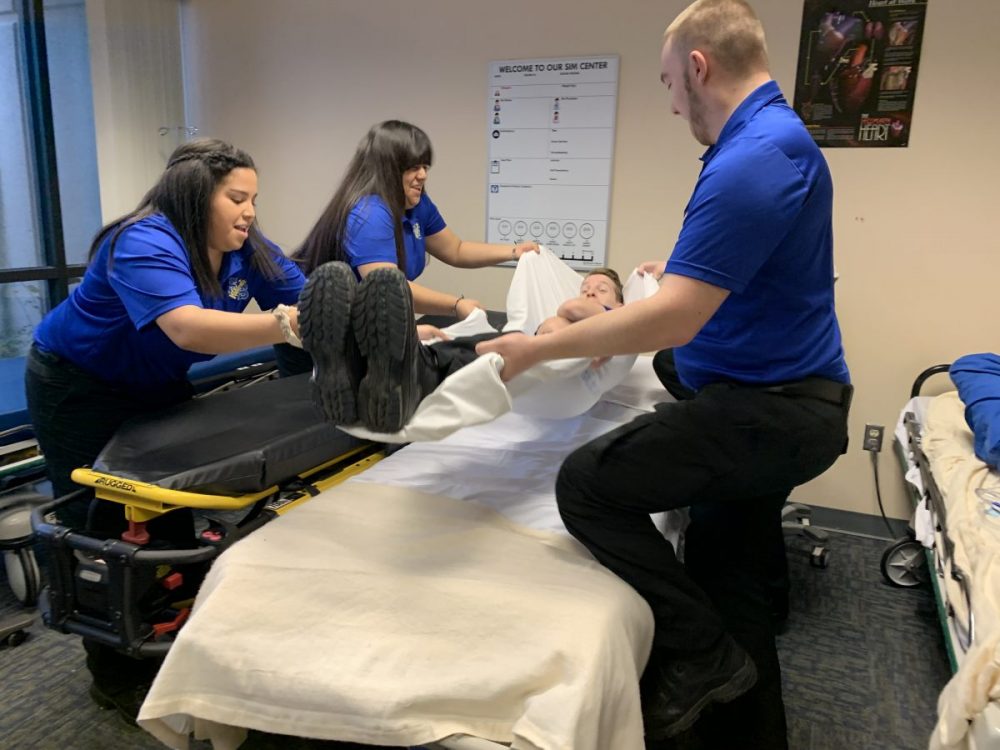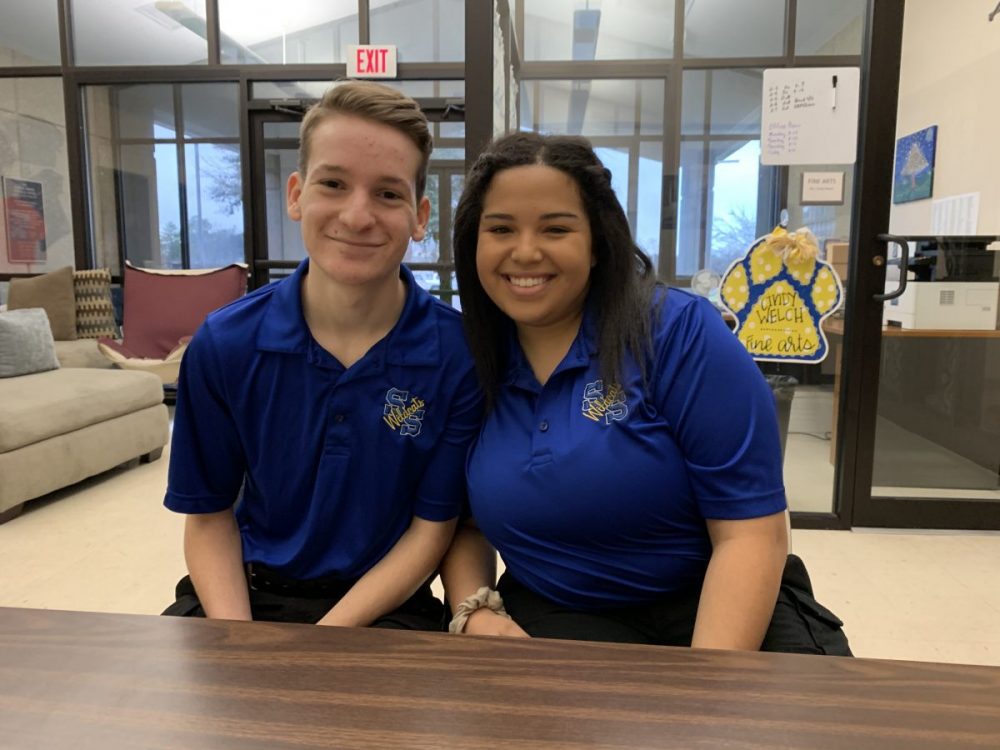At Sulphur Springs High School 270 students are involved in the health science programs, more than any other offered. To give as many students as possible a leg up when it comes to career training, the school works to offer as many opportunities and courses as possible. Students for a few years have had the opportunity, after successfully completing course work, to test to become a Certified Nurse Assistant or a Certified Medical Assistant.
This year, another course was offered for students interested in the emergency medical services field – an EMT program.
THE BASICS
Beginning this year, students interested in careers in emergency services who have met other requirements could apply for the practicum emergency medical technician programming. At the end of the course, students who are 18 and have satisfactorily completed the practicum will have the option to take the National Registry test to obtain EMT Basics certification.
SSHS is operating through the state to offer the class. Traditional EMT classes at a college or academy typically cost $6,000 for tuition. Books and uniforms add another couple of hundred dollars to the cost at those facilities. That’s not the case for SSHS students, instructor Brynn Smith noted.
“These kids take it for free. That’s a huge asset that we are able to do. These students could potentially walk the stage at graduation as an EMT,” Smith said. “Their only cost is uniform and the cost of the book, if they elect to buy it.”
The school provides a classroom set of text books for the EMTS students to use. However, students can opt to purchase the book to have at home so they can highlight and make notes in their own copy.
There is also a fee to take the National Registry EMT certification test.
Each EMT student has taken principles of health science, health science technology and as well as a practicum in health science and anatomy and physiology as their fourth science credit, according to SSHS College and Career Readiness/CTE Director Jenny Arledge.
Students in first practicum class shadow professionals at various medical facilities across town. At the end of the year, they then are asked to consider what particular area of medicine they want to specialize in.
This year, students like senior Reagan Kesting, who plans to one day become a trauma surgeon, and Kamryn Millard, who plans to become a registered nurse, have the option of taking the MA or EMT course. Currently, 25 are enrolled in the MA class and 10 in the EMT class. Kesting is enrolled in and could potentially earn both by the time he graduates from SSHS, according to Smith.
SSHS goes through ABC Resources, an established program with more than 20 years of success, including with Rockwall and Northwest High Schools, according to Smith, a licensed paramedic with 17 years experience.
The EMT class is a full year course available to seniors only, as students must be 18 years old to become an EMT.
Starting in December, students begin “clincials,” that is working alongside medical professionals in an emergency room and on an ambulance to practice the skills they’ve learned.
CLASS WORK

“The National Registry says we have to have so many hours of clinicals to even be able to sit on the test. So, that test is comprised of everything we’ve learned throughout the whole course, all the book work, all the things that we have seen on the clinicals,” said Kesting.
To get ready for clinical rotations the SSHS EMT students spend the first semester learning from the book information and skills that are required of an EMT. Students practice the skills they’ve learned after each chapter, gaining hands-on training in the lab in readiness for the time they will work with medical professionals in the community.
“I’ve worked in this for a long time, in it for 17 years. I’ve seen, sometimes, when students are sent out they are lacking certain skills that are essential on a truck. Loading patients up on stretcher, making a stretcher bed after a call, cleaning the equipment. So, I like to teach these students that before they go out on their clinicals so they are useful from day one,” Smith said.
“Once we do hands-on,” Millard said, “It makes it a bit easier to remember, that way when we go out for clinicals we’re pretty much set,” said Millard.
“These kids are neat to watch. You bring a new tool out in front of them and they are eager to put it on each other and try it out. It’s pretty neat,” Smith said.
While blood work is included in the MA program, it is not in the scope of practice for the EMT students. They will, however, bet able to give some medications, some medical interventions, a lot of patient assessment as well as the ABC (airway, breathing, circulation) essential, according to Smith.
“The students are responsible for taking care of newborn premature babies all the way up to someone who’s over 100 years old. They have to know how to take car of them medically, and if they have sustained a trauma. It definitely gives them an edge up on patient care, because they have to know all of that. It’s a hard class, probably the hardest one they’ll ever have to take because it’s not about what they know in the book. It’s about what they apply to a real life,” Smith said.
While lessons and skills practice occurs in class, the class requires a lot of dedication on the part of the students.
“It definitely does require a lot of your personal time at home, a lot of studying, and just taking the time to make sure you have your skills down,” Millard said. “You have your most major skills, you need to make sure you study and have those down.”
While the class if very time consuming, students say it’s worth the effort. And, while studying for tests is important, what’s more important are the skills and experience attained.
“We have a saying in class, we never study to pass a test. We always study for the day we’re the only thing between a patient and the grave,” Kesting explained. “That sounds a little morbid, but in real life it’s us and the patient. It’s just us and a partner in the middle of potentially nowhere with supplies only in a truck. It’s very vigorous.”
And, the clinicals that allow them to utilize those skills in the field don’t occur during regular school hours either.
“They do it when school’s not in session. Breaks or an upcoming Monday off. Anytime that school’s not in session.” Smith said. “They’ll usually do up to 14 hour shifts. They are literally putting all of this knowledge to use by saving lives. It’s a neat possibility.”
So far, only five students have done clinical rotations, but spring break is coming up and students are taking advantage of school holidays such as President’s Day to work in the ER or with EMS. They’re taking it seriously and making an impact, according to Smith.
“People that they’ve ridden out with have said these students are very mature and they can see them becoming part of the EMS family in the future. It’s neat to see that. These tenured EMS employees are seeing that these students have potential even at their young age because of their maturity level,” Smith said.
FUTURE PLANNING

Kesting said he feels very fortunate to be able to take the EMT class this year. He sees it as a “great stepping stone” to the future. Attaining the EMT certification, he can apply to work on an ambulance anywhere in the country. That will allow him to earn money while he attends college and medical school.
The students recommend the class to any SSHS students who are considering a medical career.
“I think it’s a very eye opening experience. I think you learn a lot, and you won’t regret it at all,” Millard said.
Kesting agreed, noting the exposure the class and program provide to many different medical careers while out in the community alongside Emergency Medical Services personnel as part of clinical as well as during the junior level shadowing practicum.
Millard says although she’s most interested in working as a nursery or OB nurse, she’ll gain valuable experience in the EMT class. EMTS interact with child patients and may even have expectant mothers in the back of their ambulances as patients.
“When I do go to college and I do work on the back of an ambulance, I will definitely get exposure to that. So, I don’t think it will be as hard when I actually go to work, because I already have that exposure and I already know what to do,” Millard said.
“EMTs nowadays can work in ERs, doctors’ offices, ambulance. There’s lot more to offer now than 17 years ago. I think a lot of employers are seeing the potential, how valuable they can be because they know pediatrics up to geriatrics. I think they are starting to see the asset that they are,” Smith said.
CTE PROGRAM EXPANSION
Starting next year, SSHS students on the emergency services track will also have the option of taking a firefighting course their junior year of high school then as a senior take the EMT course, according to Smith.
“These two programs work together to give students the opportunity to be EMT certified and for those in the Fire Fighter Program to be Fire certified,” Arledge noted.
As long as they are successful in the EMT course, they can become firefighters upon graduation. Students will be required to pass the Fire Commission test to earn firefighter certification and the National Registry test to for EMT certification.
“That saves them probably $9,000 by doing that in high school. Then, they can automatically go out and seek a good career. If this is not something that they build upon, it’s something they can work on forever. Some of the best doctors I know even CRNAs, even ones at our hospital, started out as an EMTs,” Smith said. “I think it just makes you a better medical provider for whatever route you decide to go on.”
KSST Radio is helping SSHS celebrate Career and Technical Education Month by featuring interviews with students highlighting a few of the CTE programs offered at school. Check out KSSTRadio.com and our YouTube Channel for more CTE features.







